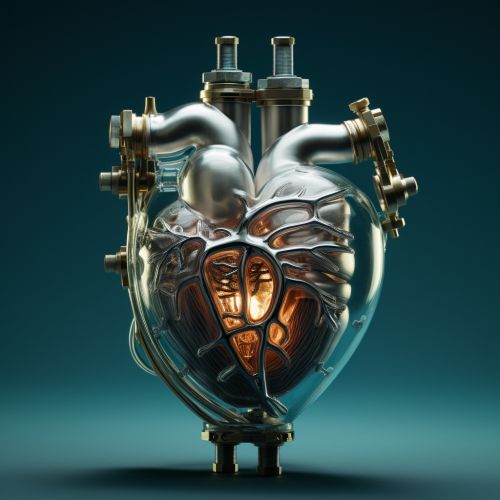Artificial Heart
Overview
The artificial heart is a prosthetic device implanted into the human body to replace the biological heart. It is distinct from a cardiac pacemaker or an implantable cardioverter defibrillator, which are designed to support or stimulate the heart's natural function, rather than replace it entirely.


History
The concept of an artificial heart dates back to the early 20th century, but it wasn't until the 1950s that significant strides were made in its development. The first successful implantation of an artificial heart in a human was performed by Dr. Robert Jarvik in 1982. The patient, Barney Clark, survived for 112 days post-operation, marking a significant milestone in the field of cardiothoracic surgery.
Design and Function
The design of an artificial heart aims to mimic the structure and function of a biological heart. It is typically composed of biocompatible materials such as polyurethane or titanium, and is powered by an external power source. The device consists of two ventricles and four valves, which work in tandem to pump blood throughout the body.
Clinical Use
Artificial hearts are primarily used as a bridge to heart transplantation for patients with end-stage heart failure. They may also be used as a permanent solution for patients who are not eligible for a heart transplant. The use of artificial hearts is associated with various risks and complications, including infection, bleeding, and device malfunction.
Future Developments
Ongoing research in the field of artificial heart technology is focused on improving the design and functionality of the device, reducing complications, and increasing patient survival and quality of life. This includes the development of fully implantable systems, the use of stem cell therapy to regenerate heart tissue, and the application of nanotechnology for improved biocompatibility and durability.
